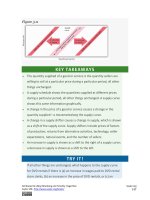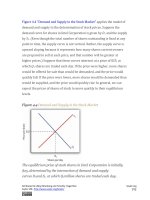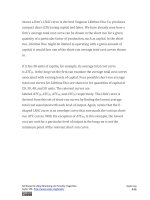Authors libby rittenberg 842
Bạn đang xem bản rút gọn của tài liệu. Xem và tải ngay bản đầy đủ của tài liệu tại đây (536.02 KB, 1 trang )
government’s case against Visa and MasterCard illustrates one major
theme of this chapter.
In this chapter we will examine some of the limits government imposes on
the actions of private firms. The first part of the chapter considers the
effort by the U.S. government to limit firms’ monopoly power and to
encourage competition in the marketplace. The second part looks at those
policies in the context of the global economy. We will also examine efforts
to modify antitrust policy to make the U.S. economy more competitive
internationally. In the third part of the chapter we will consider other
types of business regulation, including those that seek to enhance worker
and consumer safety, as well as deregulation efforts over the last 30 years.
[1] Eric Dash, “MasterCard Will Pay $1.8 Billion To a Rival,” New York Times,
June 26, 2008, p. C4; and United States vs. Visa U.S.A., Inc., 344 F.3d 229 (2d.
Circuit 2003).
16.1 Antitrust Laws and Their
Interpretation
LEARNING OBJECTIVES
1. Define antitrust policies and tell when and why they were introduced
in the United States.
2. Discuss highlights in the history of antitrust policies in the United
States, focusing on major issues.
3. Explain the guidelines the Justice Department uses in dealing with
mergers.
Attributed to Libby Rittenberg and Timothy Tregarthen
Saylor URL: />
Saylor.org
842









